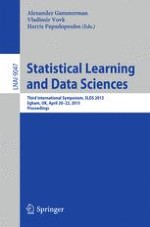2015 | Book
Statistical Learning and Data Sciences
Third International Symposium, SLDS 2015, Egham, UK, April 20-23, 2015, Proceedings
Editors: Alexander Gammerman, Vladimir Vovk, Harris Papadopoulos
Publisher: Springer International Publishing
Book Series : Lecture Notes in Computer Science
